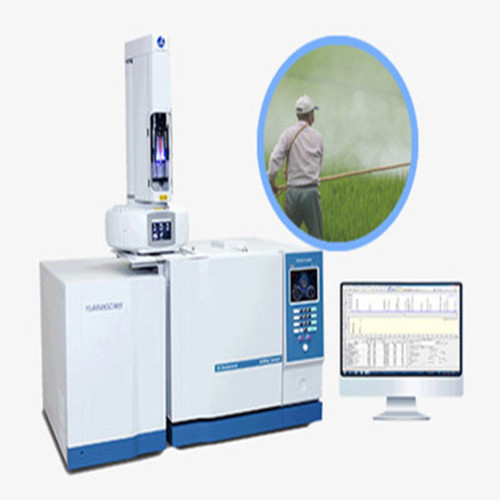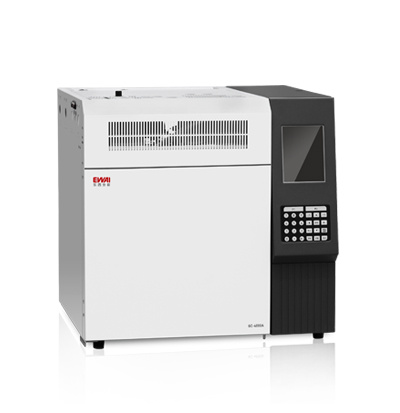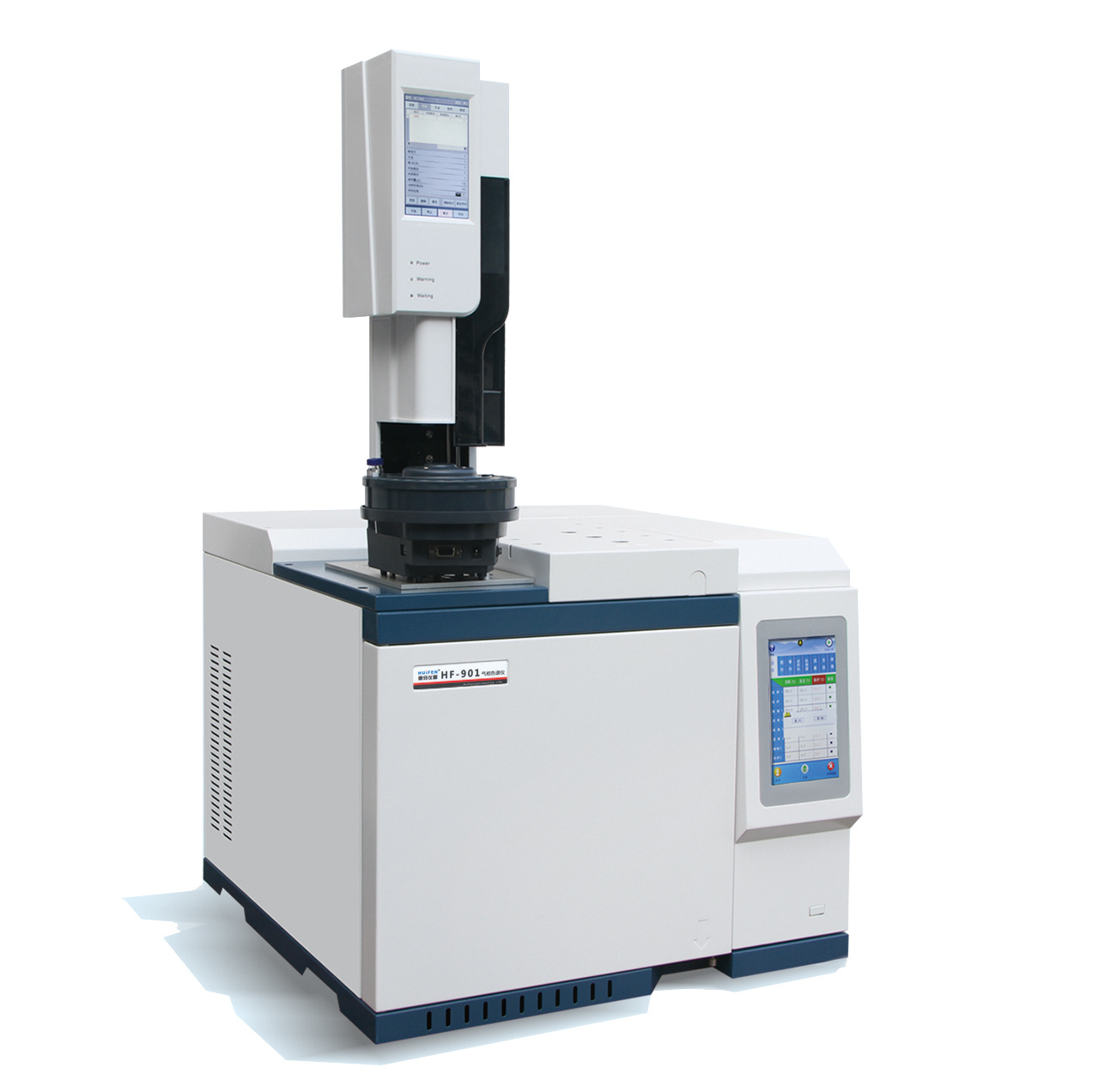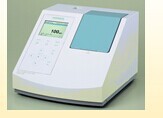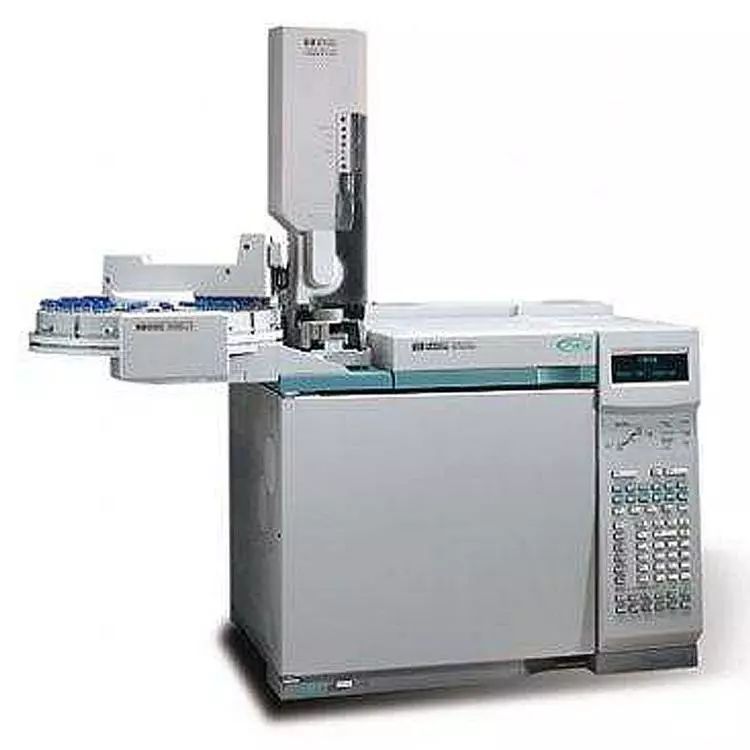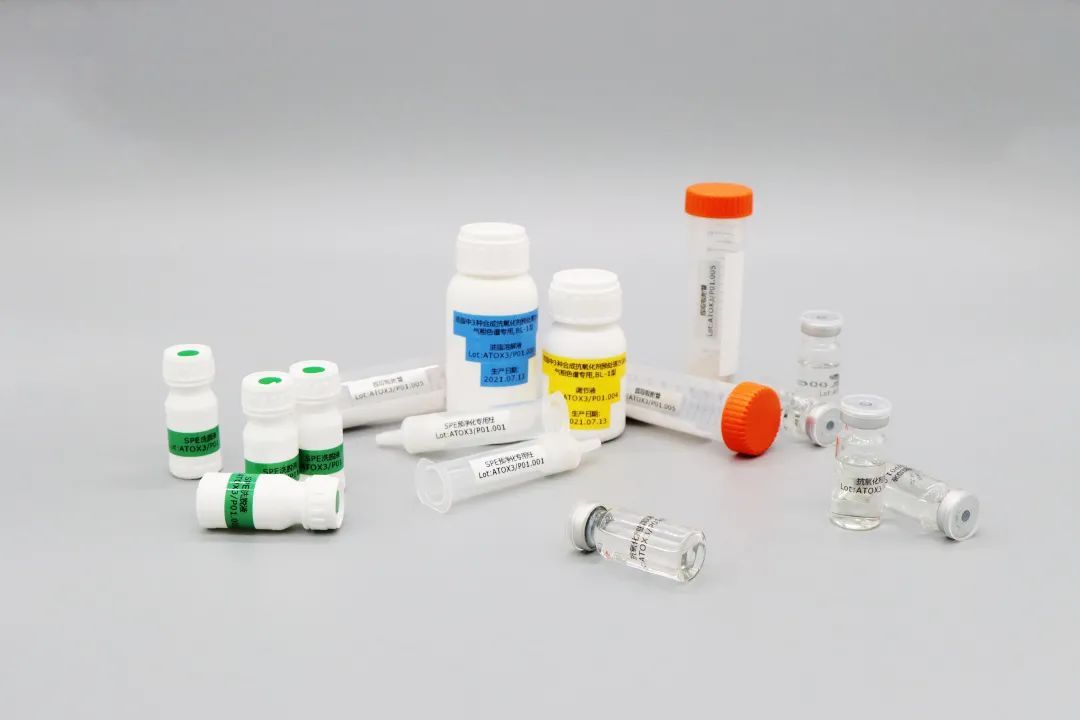气相色谱检测器选择指南
p style=" line-height: 1.5em " & nbsp & nbsp & nbsp & nbsp strong 气相色谱检测器 /strong (Gas chromatographic detector)是检验色谱柱后流出物质的成分及浓度变化的装置,它可以将这种变化转化为电信号,是气相色谱分析中不可或缺的部分。经过检测器将各组分的成分及浓度转化为电信号并经由放大器放大,最终由记录仪或微处理机得到色谱图,就可以对被测试的组分进行定性和定量的分析了。气相色谱检测器相当于气相色谱的“眼睛”,选择合适的检测器对于应用气相色谱检测目标物质至关重要,仪器信息网编辑对气相色谱检测器相关的分类、性能指标以及常用检测器进行了整理,方便大家在选择检测器时进行参考。 /p p style=" line-height: 1.5em text-align: center " strong style=" text-align: center " span style=" font-size: 20px color: rgb(31, 73, 125) " 检测器分类 /span /strong /p p style=" line-height: 1.5em " 气相色谱检测器种类繁多,有多种分类: /p p style=" line-height: 1.5em " 1、根据对被检测样品的响应范围可以被分为: /p p style=" line-height: 1.5em " strong 通用型检测器: /strong 对绝大多数检测无知均有响应,如:TCD、PID /p p style=" line-height: 1.5em " strong 选择型检测器: /strong 对某一类物质有响应,对其他物质的无响应或很小,如:FPD。 /p p style=" line-height: 1.5em " 2、根据检测器的检测方式不同可以分为: /p p style=" line-height: 1.5em " strong 浓度型检测器: /strong 测量的是载气中某组分浓度瞬间的变化,即检测器的响应值和组分的浓度成正比,如TCD、PID /p p style=" line-height: 1.5em " strong 质量型检测器: /strong 测量载气中某组分单位时间内进入检测器的含量变化,即检测器的响应值和单位时间内进入检测器某组分的质量成正比。如FID、FPD。 /p p style=" line-height: 1.5em " 3、根据信号记录方式不同进行分类 /p p style=" line-height: 1.5em " strong 微分型检测器: /strong 微分型检测器的响应与流出组分的浓度或质量成正比,绘出的色谱峰是一系列的峰。 /p p style=" line-height: 1.5em " strong 积分型检测器: /strong 测量各组分积累的总和,响应值与组分的总质量成正比,色谱图为台阶形曲线,阶高代表组分的总量。 /p p style=" line-height: 1.5em " 4、根据样品是否被破坏可以分为: /p p style=" line-height: 1.5em " strong 破坏性检测器: /strong 组分在检测过程中,其分子形式被破坏,例如:FID、NPD、FPD /p p style=" line-height: 1.5em " strong 非破坏性检测器 /strong :组分在检测过程中,保持其分子结构,例如:TCD、PID、ECD。 span style=" text-align: center " & nbsp & nbsp /span /p p style=" line-height: 1.5em text-align: center " strong style=" color: rgb(31, 73, 125) text-align: center " span style=" font-size: 20px " 性能指标 /span /strong /p p style=" line-height: 1.5em " & nbsp 气相色谱检测器一般需满足以下要求:通用性强,能检测多种化合物或选择性强,只对特定类别化合物或含有特殊基团的化合物有特别高的灵敏度。响应值与组分浓度间线性范围宽,即可做常量分析,又可做微量、痕量分析。稳定性好,色谱操作条件波动造成的影响小,表现为噪声低、漂移小。检测器体积小、响应时间快。 /p p style=" line-height: 1.5em " 根据以上要求,气相色谱检测器的主要性能指标有以下几个方面: /p p style=" line-height: 1.5em " strong 1. 灵敏度 /strong /p p style=" line-height: 1.5em " 灵敏度是单位样品量(或浓度)通过检测器时所产生的相应(信号)值的大小,灵敏度高意味着对同样的样品量其检测器输出的响应值高,同一个检测器对不同组分,灵敏度是不同的,浓度型检测器与质量型检测器灵敏度的表示方法与计算方法亦各不相同。 /p p style=" line-height: 1.5em " strong 2. 检出限 /strong /p p style=" line-height: 1.5em " 检出限为检测器的最小检测量,最小检测量是要使待测组分所产生的信号恰好能在色谱图上与噪声鉴别开来时,所需引入到色谱柱的最小物质量或最小浓度。因此,最小检测量与检测器的性能、柱效率和操作条件有关。如果峰形窄,样品浓度越集中,最小检测量就越小。 /p p style=" line-height: 1.5em " strong 3. 线性范围 /strong /p p style=" line-height: 1.5em " 定量分析时要求检测器的输出信号与进样量之间呈线性关系,检测器的线性范围为在检测器呈线性时最大和最小进样量之比,或叫最大允许进样量(浓度)与最小检测量(浓度)之比。比值越大,表示线性范围越宽,越有利于准确定量。不同类型检测器的线性范围差别也很大。如氢焰检测器的线性范围可达107,热导检测器则在104左右。由于线性范围很宽,在绘制检测器线性范围图时一般采用双对数坐标纸。 /p p style=" line-height: 1.5em " strong 4. 噪音和漂移 /strong /p p style=" line-height: 1.5em " 噪声就是零电位(又称基流)的波动,反映在色谱图上就是由于各种原因引起的基线波动,称基线噪声。噪声分为短期噪声和长期噪声两类,有时候短期噪声会重叠在长期噪音上。仪器的温度波动,电源电压波动,载气流速的变化等,都可能产生噪音。基线随时间单方向的缓慢变化,称基线漂移。 /p p style=" line-height: 1.5em " strong 5. 响应时间 /strong /p p style=" line-height: 1.5em " 检测器的响应时间是指进入检测器的一个给定组分的输出信号达到其真值的90%时所需的时间。检测器的响应时间如果不够快,则色谱峰会失真,影响定量分析的准确性。但是,绝大多数检测器的响应时间不是一个限制因素,而系统的响应,特别是记录仪的局限性却是限制因素 。 /p p style=" line-height: 1.5em text-align: center " strong style=" color: rgb(31, 73, 125) font-size: 20px text-align: center " 常用检测器 /strong /p p style=" line-height: 1.5em " & nbsp & nbsp & nbsp & nbsp 在日常应用中,主要会用到的气相色谱检测器主要有FID、ECD、TCD、FPD、NPD、MSD等,针对这些检测器,梳理一下它们的优缺点和应用范围。 /p p style=" text-align: center line-height: 1.5em " span style=" color: rgb(31, 73, 125) " strong span style=" font-size: 20px " 常见气相色谱检测器汇总 /span /strong /span /p p style=" line-height: 1.5em " strong span style=" font-size: 20px color: rgb(79, 97, 40) " /span /strong /p table style=" border-collapse:collapse " data-sort=" sortDisabled" tbody tr class=" firstRow" td style=" border: 1px solid windowtext word-break: break-all " valign=" middle" rowspan=" 1" colspan=" 2" align=" center" p style=" line-height: 1.5em " 检测器 /p /td td style=" border: 1px solid windowtext word-break: break-all " width=" 145" valign=" middle" rowspan=" 2" colspan=" 1" align=" center" p style=" line-height: 1.5em " 工作原理 /p /td td style=" border: 1px solid windowtext " width=" 145" valign=" middle" rowspan=" 2" colspan=" 1" align=" center" p style=" line-height: 1.5em " 应用范围 /p /td /tr tr td style=" border: 1px solid windowtext word-break: break-all " width=" 145" valign=" middle" align=" center" p style=" line-height: 1.5em " 中文名称 /p /td td style=" border: 1px solid windowtext word-break: break-all " width=" 145" valign=" middle" align=" center" p style=" line-height: 1.5em " 英文缩写 /p /td /tr tr td style=" border: 1px solid windowtext word-break: break-all " width=" 145" valign=" middle" align=" center" p style=" line-height: 1.5em " 火焰离子化检测器 br/ /p /td td style=" border: 1px solid windowtext word-break: break-all " width=" 145" valign=" middle" align=" center" p style=" line-height: 1.5em " FID /p /td td style=" border: 1px solid windowtext word-break: break-all " width=" 145" valign=" middle" align=" center" p style=" line-height: 1.5em " 火焰电离 /p /td td style=" border: 1px solid windowtext word-break: break-all " width=" 145" valign=" middle" align=" center" p style=" line-height: 1.5em " 有机化合物 /p /td /tr tr td style=" border: 1px solid windowtext word-break: break-all " width=" 145" valign=" middle" align=" center" p style=" line-height: 1.5em " 电子俘获检测器 /p /td td style=" border: 1px solid windowtext word-break: break-all " width=" 145" valign=" middle" align=" center" p style=" line-height: 1.5em " ECD /p /td td style=" border: 1px solid windowtext word-break: break-all " width=" 145" valign=" middle" align=" center" p style=" line-height: 1.5em " 化学电离 /p /td td style=" border: 1px solid windowtext word-break: break-all " width=" 145" valign=" middle" align=" center" p style=" line-height: 1.5em " 电负性化合物 /p /td /tr tr td style=" border: 1px solid windowtext word-break: break-all " width=" 145" valign=" middle" align=" center" p style=" line-height: 1.5em " 热导检测器 /p /td td style=" border: 1px solid windowtext word-break: break-all " width=" 145" valign=" middle" align=" center" p style=" line-height: 1.5em " TCD /p /td td style=" border: 1px solid windowtext word-break: break-all " width=" 145" valign=" middle" align=" center" p style=" line-height: 1.5em " 热导系数差异 /p /td td style=" border: 1px solid windowtext word-break: break-all " width=" 145" valign=" middle" align=" center" p style=" line-height: 1.5em " 所有化合物 /p /td /tr tr td style=" border: 1px solid windowtext word-break: break-all " width=" 145" valign=" middle" align=" center" p style=" line-height: 1.5em " 火焰光度检测器 /p /td td style=" border: 1px solid windowtext word-break: break-all " width=" 145" valign=" middle" align=" center" p style=" line-height: 1.5em " FPD /p /td td style=" border: 1px solid windowtext word-break: break-all " width=" 145" valign=" middle" align=" center" p style=" line-height: 1.5em " 分子发射 /p /td td style=" border: 1px solid windowtext word-break: break-all " width=" 145" valign=" middle" align=" center" p style=" line-height: 1.5em " 磷、硫化合物 /p /td /tr tr td style=" border: 1px solid windowtext word-break: break-all " width=" 145" valign=" middle" align=" center" p style=" line-height: 1.5em " 氮磷检测器 /p /td td style=" border: 1px solid windowtext word-break: break-all " width=" 145" valign=" middle" align=" center" p style=" line-height: 1.5em " NPD /p /td td style=" border: 1px solid windowtext word-break: break-all " width=" 145" valign=" middle" align=" center" p style=" line-height: 1.5em " 热表面电离 /p /td td style=" border: 1px solid windowtext word-break: break-all " width=" 145" valign=" middle" align=" center" p style=" line-height: 1.5em " 氮、磷化合物 /p /td /tr /tbody /table p style=" line-height: 1.5em " span style=" font-size: 18px color: rgb(31, 73, 125) " strong FID——火焰离子化检测器 /strong /span br/ FID是多用途的破坏性质量型通用检测器,灵敏度高,线性范围宽,广泛应用于有机物的常量和微量检测。F其主要原理为,氢气和空气燃烧生成火焰,当有机化合物进入火焰时,由于离子化反应,生成比基流高几个数量级的离子,在电场作用下,这些带正电荷的离子和电子分别向负极和正极移动,形成离子流,此离子流经放大器放大后,可被检测。 /p p style=" text-align: center line-height: 1.5em " img src=" http://img1.17img.cn/17img/images/201807/noimg/e368385d-2632-45d8-9d34-f6dcefd84528.jpg" title=" 201506242255_551533_2984502_3.jpg" / /p p style=" text-align: left line-height: 1.5em " span style=" color: rgb(0, 0, 0) " 火焰离子化检测对电离势低于H sub 2 /sub 的有机物产生响应,而对无机物、永久气体和水基本上无响应,所以 strong 火焰离子化检测器只能分析有机物 /strong (含碳化合物),不适于分析惰性气体、空气、水、CO、CO sub 2 /sub 、CS sub 2 /sub 、NO、SO sub 2 /sub 及H sub 2 /sub S等。 /span /p p style=" text-align: left line-height: 1.5em " span style=" color: rgb(0, 0, 0) " & nbsp & nbsp & nbsp & nbsp FID特别适合于 strong 有机化合物的常量到微量分析 /strong ,是目前环保领域中,空气和水中痕量有机化合物检测的最好手段。抗污染能力强,检测器寿命长,日常维护保养量也少,一般讲FID检测限操作在大于1× 10 sup -10 /sup g/s时,操作条件无须特别注意均能正常工作,也不会对检测器本身造成致命的损失。由于FID响应有一定的规律性,在复杂的混合物多组分的定量分析时,特别对于一般的常规分析,可以不用纯化合物校正,简化了操作,提高了工作效率。 /span /p p style=" line-height: 1.5em " span style=" color: rgb(31, 73, 125) " strong span style=" font-size: 18px " ECD——电子捕获检测器 /span /strong /span /p p style=" line-height: 1.5em " span style=" color: rgb(0, 0, 0) " 电子捕获检测器是一种高选择性检测器,在分析痕量电负性有机化合物上有很好的应用。它仅对 strong 那些能俘获电子的化合物 /strong ,如卤代烃、含N、O和S等杂原子的化合物有响应。由于它灵敏度高、选择性好,多年来已广泛用于环境样品中痕量农药、多氯联苯等的分析。ECD是气相电离检测器之一,但它的信号不同于FID等其他电离检测器,FID等信号是基流的增加,ECD信号是高背景基流的减小。ECD的不足之处是 strong 线性范围较小 /strong ,通常仅102-104。 /span /p p style=" text-align: center line-height: 1.5em " & nbsp & nbsp & nbsp img src=" http://img1.17img.cn/17img/images/201807/noimg/4dcdf2d1-8cb9-4e96-b3f9-a09ced241d86.jpg" title=" 2015062422302130_01_2984502_3.jpg" style=" text-align: center " / /p p style=" line-height: 1.5em " span style=" color: rgb(31, 73, 125) " strong span style=" font-size: 18px " /span /strong /span /p p style=" line-height: 1.5em " & nbsp & nbsp & nbsp & nbsp ECD是浓度型选择性检测器,对电负性的组分能给出极显著的响应信号。用于分析卤素化合物、一些金属螯合物和甾族化合物。其主要原理为检测室内的放射源放出β-射线(初级电子),与通过检测室的载气碰撞产生次级电子和正离子,在电场作用下,分别向与自己极性相反的电极运动,形成基流,当具有负电性的组分(即能捕获电子的组分)进入检测室后,捕获了检测室内的电子,变成带负电荷的离子,由于电子被组分捕获,使得检测室基流减少,产生色谱峰信号。 /p p style=" line-height: 1.5em " & nbsp 由于ECD在常用的几种检测器中灵敏度最高,再加上ECD结构、供电方式和所有操作条件都对ECD主要性能产生影响。可以说,ECD选用在所有常用检测器中也是比较困难的,遇到使用中问题也最多。 br/ /p p style=" line-height: 1.5em " 选择性:从选择性看,ECD特别适合于环境监测和生物样品的复杂多组分和多干扰物分析,但有些干扰物和待定性定量分析的组分有着近似的灵敏度(几乎无选择性),特别做痕量分析时,还应对样品进行必要的预处理,或改善柱分离以防止出现定性错误。 /p p style=" line-height: 1.5em " 灵敏度:ECD分析对电负性样品具有较高的灵敏度,如四氯化碳最小检测量可达到1× 10 sup -15 /sup g。 /p p style=" line-height: 1.5em " 线性范围:传统的认为ECD线性范围较窄,但由于ECD的不断完善,线性范围已优于104,可基本满足分析的需求。同时,针对高浓度样品,可以通过稀释样品后再使用ECD进行分析。 /p p style=" line-height: 1.5em " 操作性:ECD几乎对所有操作条件敏感,其对干扰物和目标物都具有高灵敏度的特性使得ECD的操作难度较大,有很小浓度的敏感物就可能造成对分析的干扰。 /p p style=" line-height: 1.5em " 因此,在使用ECD进行样品分析时,应当了解被分析样品的特点和待定性定量的组分的物理性质,确定选用ECD是否分析合适。 /p p style=" line-height: 1.5em " span style=" color: rgb(31, 73, 125) " strong span style=" font-size: 18px " TCD——热导检测器 /span /strong /span /p p style=" line-height: 1.5em " span style=" font-size: 16px color: rgb(0, 0, 0) " & nbsp & nbsp & nbsp & nbsp 热导检测器是一种通用的非破坏性浓度型检测器,理论上可应用于任何组分的检测,但因其灵敏度较低,故一般用于常量分析。其基于不同组分与载气有不同的热导率的原理而工作。热导检测器的热敏元件为热丝,如镀金钨丝、铂金丝等。当被测组分与载气一起进入热导池时,由于混合气的热导率与纯载气不同(通常是低于载气的热导率),热丝传向池壁的热量也发生变化,致使热丝温度发生改变,其电阻也随之改变,进而使电桥输出端产生不平衡电位而作为信号输出,记录该信号从而得到色谱峰。 /span /p p style=" text-align: center line-height: 1.5em " span style=" font-size: 16px color: rgb(0, 0, 0) " img src=" http://img1.17img.cn/17img/images/201807/noimg/9cfa17ce-9f01-4263-b262-27853bbe7e3f.jpg" title=" 2015062422242303_01_2984502_3.jpg" / /span /p p style=" line-height: 1.5em " span style=" color: rgb(31, 73, 125) " strong span style=" font-size: 18px " /span /strong /span /p p style=" line-height: 1.5em " & nbsp & nbsp & nbsp & nbsp TCD通用性强,性能稳定,线性范围最大,定量精度高,操作维修简单,廉价易于推广普及, strong 适合常量和半微量分析 /strong ,特别适合 strong 永久气体 /strong 或组分少且比较纯净的样品分析。 /p p style=" line-height: 1.5em " 对于环境监测和食品农药残留等样品进行痕量分析,TCD适用性不强,其主要原因有:检测限大(常规& lt 10-6g/mL) 样品选择性差,即对非检测组分抗干扰能力差 虽然可在高灵敏度下运行,但易被污染,基线稳定性变差。 /p p style=" line-height: 1.5em " span style=" color: rgb(31, 73, 125) " strong span style=" font-size: 18px " FPD——火焰光度检测器 /span /strong /span /p p style=" line-height: 1.5em " & nbsp & nbsp & nbsp & nbsp FPD为质量型选择性检测器,主要用于测定含硫、磷化合物。使用中通入的氢气量必须多于通常燃烧所需要的氢气量,即在富氢情况下燃烧得到火焰。广泛应用于石油产品中微量硫化合物及农药中有机磷化合物的分析。其主要原理为组分在富氢火焰中燃烧时组分不同程度地变为碎片或分子,其外层电子由于互相碰撞而被激发,当电子由激发态返回低能态或基态时,发射出特征波长的光谱,这种特征光谱通过经选择滤光片后被测量。如硫在火焰中产生350-430nm的光谱,磷产生480-600nm的光谱,其中394nm和526nm分别为含硫和含磷化合物的特征波长。 /p p style=" text-align: center line-height: 1.5em " img src=" http://img1.17img.cn/17img/images/201807/noimg/76c52176-d151-497d-be84-393c102e715c.jpg" title=" 2015062422290693_01_2984502_3.jpg" / /p p style=" line-height: 1.5em " & nbsp & nbsp & nbsp & nbsp FPD是一种高灵敏度、高选择性的检测器,对含P和S特别敏感,主要用于 strong 含P和S的有机化合物和气体硫化物中P和S的微量和痕量分析 /strong ,如有机磷农药、水质污染中的硫醇、天然气中含硫化物的气体等。 /p p style=" line-height: 1.5em " FPD火焰是富氢焰,空气的供量只够与70%的氢燃烧反应,所以火焰温度较低以便生成激发态的P、S化合物碎片。FPD基线稳定,噪声也比较小,信噪比高。氮气(载气)、氢气和空气流速的变化直接影响FPD的灵敏度、信噪比、选择性和线性范围。氮气流速在一定范围变化时,对P的检测无影响。对S的检测,表现出峰高与峰面积随氮气流量增加而增大,继续增加时,峰高和峰面积逐渐下降。这是因为作为稀释剂的氮气流量增加时,火焰温度降低,有利于S的响应,超过最佳值后,则不利于S的响应。无论S还是P的测定,都有各自最佳的氮气和空气的比值,并随FPD的结构差异而不同,测P比测S需要更大的氢气流速。 /p p style=" line-height: 1.5em " strong span style=" font-size: 18px color: rgb(31, 73, 125) " NPD——氮磷检测器 /span /strong br/ /p p style=" line-height: 1.5em " span style=" font-family: 宋体, SimSun font-size: 16px " NPD是一种质量型检测器。 /span span style=" font-family: 宋体, SimSun " NPD工作原理是将一种涂有碱金属盐如Na /span sub style=" font-family: 宋体, SimSun " 2 /sub span style=" font-family: 宋体, SimSun " SiO /span sub style=" font-family: 宋体, SimSun " 3 /sub span style=" font-family: 宋体, SimSun " 、Rb /span sub style=" font-family: 宋体, SimSun " 2 /sub span style=" font-family: 宋体, SimSun " SiO /span sub style=" font-family: 宋体, SimSun " 3 /sub span style=" font-family: 宋体, SimSun " 类化合物的陶瓷珠,放置在燃烧的氢火焰和收集极之间,当氮、磷化合物先在气相边界层中热化学分解,产生电负性的基团。试样蒸气和氢气流通过碱金属盐表面时,该电负性基团再与气相的铷原子(Rb)进行化学电离反应,生成Rb+和负离子,负离子在收集极释放出一个电子,并与氢原子反应,失去电子的碱金属形成盐再沉积到陶瓷珠的表面上,从而获得信号响应。 /span /p p style=" text-align: center line-height: 1.5em " img src=" http://img1.17img.cn/17img/images/201807/noimg/4fe5acfc-2693-4772-8c2a-8d5c225f7ac7.jpg" title=" 2015062422312688_01_2984502_3.jpg" / /p p style=" line-height: 1.5em " & nbsp & nbsp & nbsp & nbsp NPD结构简单,成本较低,灵敏度、选择性和线性范围均较好,对含N和P的化合物选择性好、灵敏度高,适合做样品中 strong 含N和P的微量和痕量分析 /strong 。NPD灵敏度大小和化合物的分子结构有关,如检测含N化合物时,对易分解成氰基(CN)的灵敏度最高,其它结构尤其是硝酸酯和酰胺类响应小。 /p p style=" line-height: 1.5em " NPD铷珠的寿命不是无限的,在一般使用条件下,寿命可保证2年以上。但在操作中,铷珠的退化速度不是均匀的,通常使用初期退化快,后期退化慢。实验表明:前50 h灵敏度可能下降20%,而后1300h,每经过250 h,灵敏度下降20%左右。这也就是为什么新的铷珠开始使用前,为获得高稳定性,必须对其进行老化处理的原因,当做半定量,且灵敏度要求不高时,老化时间不宜太长。 /p p style=" line-height: 1.5em " NPD的检测器控温和控温精度、气体的流量稳定性、待分析组分分子结构等因素,均对铷珠最佳工作状态有影响,即很难保证性能恒定不变。为保证选择性和灵敏度不变,根据情况需不定时的调整NPD各条件参数。 /p p style=" line-height: 1.5em " br/ /p p style=" line-height: 1.5em " & nbsp & nbsp & nbsp & nbsp 气相色谱检测器是气相色谱分析法的重要部分,它所涉及的内容应包括两方面:一是检测器的正确选择和使用,二是其他有关条件的优化。一个好的气相色谱检测器,应该是这两方面均处于最佳状态。 br/ & nbsp & nbsp & nbsp & nbsp 建立气相色谱检测方法首先要针对不同样品和分析目的,正确选用不同的检测器,并使检测器的灵敏度、选择性、线性及线性范围和稳定性等性能得到充分的发挥,即处于最佳状态。 br/ 通常用单一检测器直接检测,必要时可衍生化后再检测,或用多检测器组合检测。检测器正确选用和性能达到最佳,不仅得到的定性和定量信息准确、可靠,而且还可简化整个分析方法。反之,不仅得不到有关信息,浪费了时间和精力,而且可能损坏检测器。 br/ & nbsp & nbsp & nbsp & nbsp 一个良好的检测方法除考虑检测器本身性能外,还应该检测到的色谱峰或信号不失真、不变形。因此,要求柱后至检测器峰不变宽、不吸附,以色谱峰宽度保持柱分离状态进入检测器为佳。还要求检测器产生的信号在放大或变换的过程中,或信号传输至记录器、数据处理系统过程中,或在数据处理过程中不失真。另外,为了充分发挥某些检测器的优异性能,还要求正确掌握某些化合物的衍生化方法等等。 /p p style=" line-height: 1.5em " br/ /p p br/ /p
 400-860-5168转2060
400-860-5168转2060
 留言咨询
留言咨询
 400-860-5168转0819
400-860-5168转0819
 留言咨询
留言咨询
 留言咨询
留言咨询
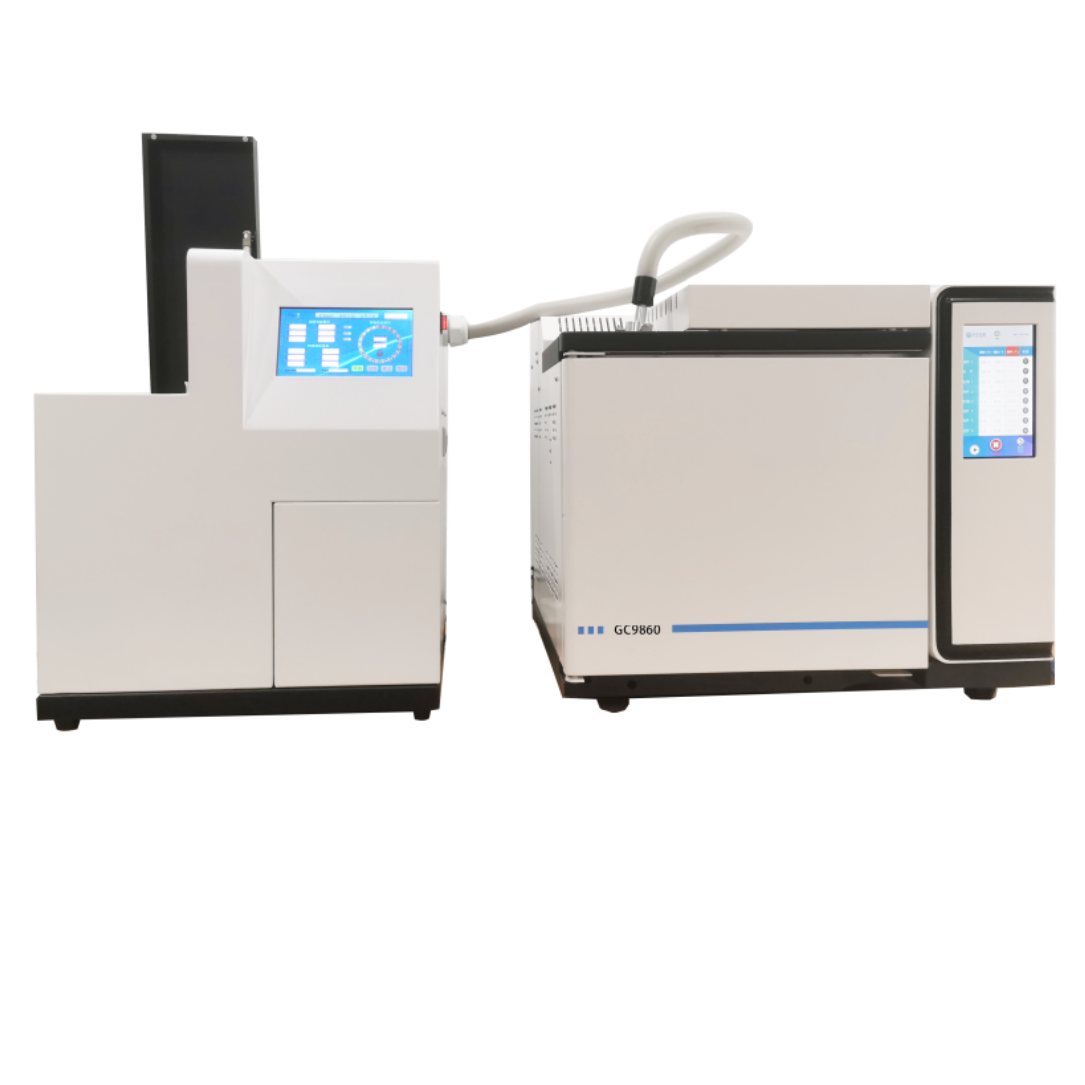
 400-860-5168转2141
400-860-5168转2141
 留言咨询
留言咨询
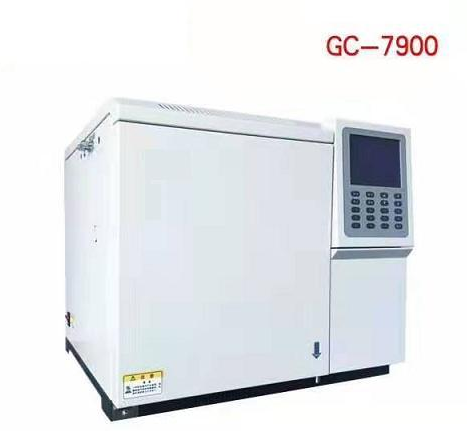
 400-860-5168转4302
400-860-5168转4302
 留言咨询
留言咨询

 400-860-5168转1666
400-860-5168转1666
 留言咨询
留言咨询

